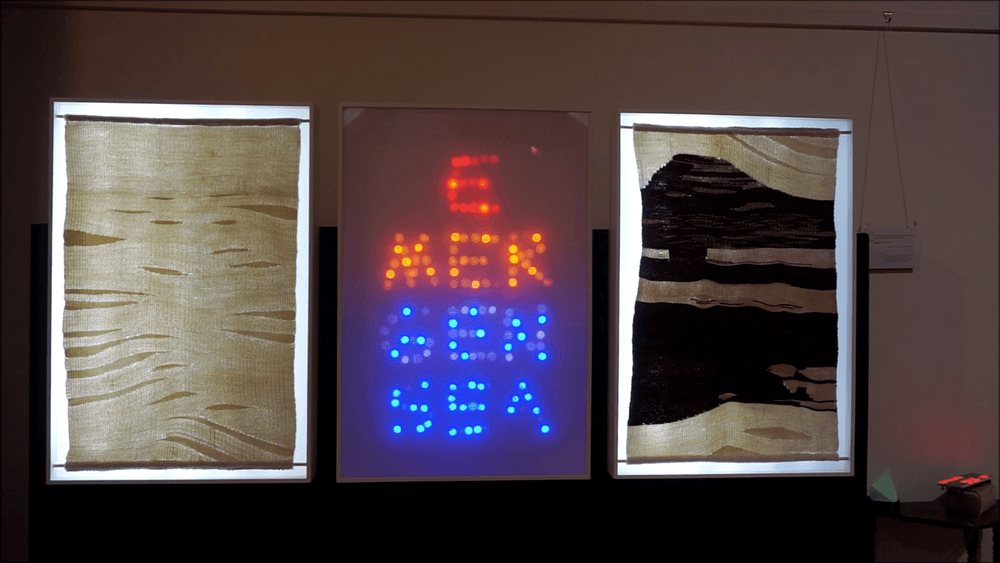Pam McKinlay with Henry Greenslade
The Iceberg sensor project is part of the ongoing Ice is Cool series by Pam McKinlay started in 2018. To highlight the connection between tailpipe emissions and glacial ice melt (1 kg of CO2 equates to 12kg of ice melt)[i] we created a visual CO2 indicator-gizmo in the shape of an iceberg. For the proof of concept, we made a prototype indoor CO2 monitoring device, based on a ‘traffic lights’ change–alert system. The visual indicator allowed room occupants to notice the status of air quality at a glance and alerted them to take responsibility for increasing ventilation and air movement if levels rose above acceptable levels. The project was envisaged as a pilot for a “New Zealand Environmental Indicator” (NZEI) network and debuted at The Complete Entanglement of Everything (September 2020) exhibition and was a narrative focal point at an Antarctic exhibit during EARTH – caught in stone (April 2021).
“Transitional arts practice proposes how ‘macro’ challenges can be transformed creatively by a daily ‘micro’ personal practice.”[ii]
At a classroom level the project has been a great success with elevated awareness of the immediate environment and wider discussions about other actions aimed at curbing human-induced CO2 concentrations in the outer environment.
CO2 is recognised as a useful proxy for airborne pollutants(outdoor and indoor). Indoors, it also serves as a proxy for airborne respiratory pathogens which would otherwise be invisible. This has become more topical in a Covid-19 world and our initial climate change art-project has pivoted to being a useful student health and wellbeing project (now that doesn’t happen every day).
WHAT’S INSIDE THE BOX? The technical components were created as a special student project by Henry Greenslade from the Information Technology Department, Otago Polytechnic. We have plans to take the project into schools. Full technical information for this project, including Readme.md texts, are available at GitHub.
Footnotes:
[i] Ruth Mottram, “The Melting of Greenland’s Ice Sheet,” Saturday Morning, RNZ, 31 August 2019, audio, https://www.rnz.co.nz/ national/ programmes/saturday/audio/2018711238/ruth-mottram-the-melting-of-greenland-s-ice-sheet
[ii] Lucy Neal, ed. Playing For Time: Making Art as if the World Mattered, (London: Oberon Books, 2015), 14
Artist Bio:
Pam McKinlay (ORCID ID) is a writer and an artist with a background in applied science and the history of art. She is a convenor of the Art+Science Project series in Dunedin. As an artist, she works in collaboration with other artists and scientists locally and nationally in community outreach and education projects on the themes of climate change, energy, the cryosphere and ocean acidification
